London’s Frieze Art Fair with Clay Ketter
A tour of the show, complete with insights from one of our favorite artists

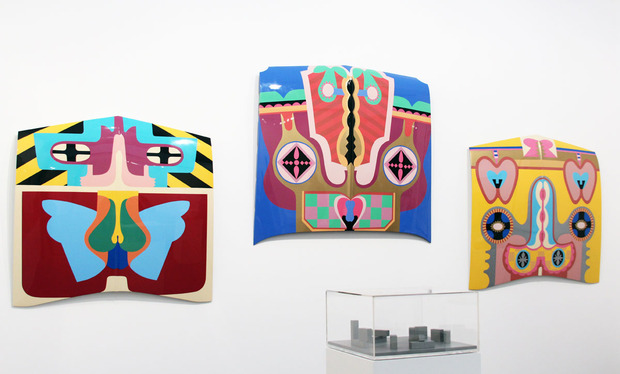
This year Cool Hunting was fortunate enough to have the artist Clay Ketter as our companion at London’s Frieze Art Fair. Ketter is well known for his post-minimalist work that questions our relationship with everyday domestic objects through construction and fabrication techniques, and we have been fans of his for some time. His photo series “Gulf Coast Slabs“—which documented the destruction of homes after Hurricane Katrina—is particularly powerful.
Ketter’s current solo show at London’s Bartha Contemporary called “See What I Mean” focuses on his series of kitchen cabinet sculptures and works on paper—which examine the language of modular furniture and play with the idea of minimalism in the everyday. Ketter took time out from his show to visit Frieze and talk with us about the works that caught his attention and how they sit in context with his own practice.
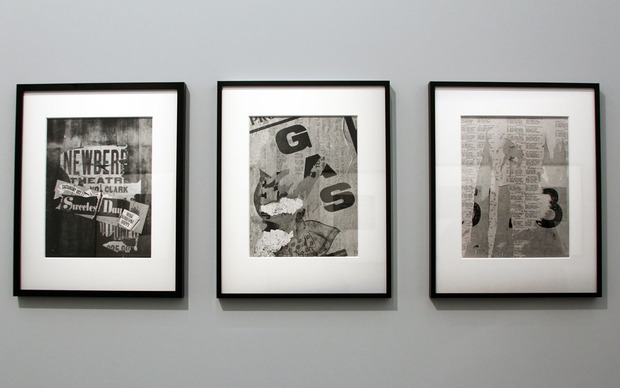
Clay, what is your experience of art fairs from your perspective as a practicing artist?
There are two types of positive experience at the fairs, all fairs. The first is what I would call re-discovery; where I am reminded of the importance of certain artists that I am already aware of. My relationship to these artists, while perhaps not derivative, has to do with the confirmation—or maybe affirmation—and re-confirmation they give me.
This may reveal itself in the area in which I work—be it aesthetic or conceptual—but more often what they mean to me as colleagues; how they found and developed their important stations in art. [At Frieze Masters] Gordon Matta-Clark and Aaron Siskind are definitely two of these fair re-encounters, and Judy Chicago as well.
The other type of experience is, of course, discovery. For me this is not simply seeing something by someone I have never seen before, but seeing something that surprises me; that most exemplifies what I would call the unrecognizable.
The unrecognizable always has some subtle handle to hold onto but upon closer scrutiny, one realizes that it isn’t at all what one thought it was—and you are suddenly knocked off-kilter. I like it when art does that and I certainly enjoy it when I achieve this in my own work.
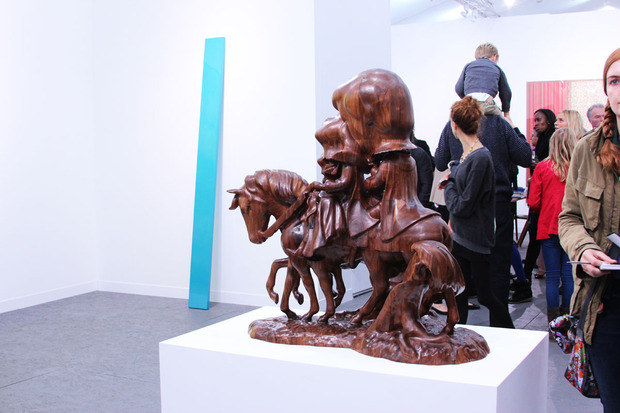
With which works in particular did you experience this sense of the unrecognizable?
At Frieze Paul McCarthy’s wooden sculpture “White Snow and Prince on Horseback” did that for me. Pierre Huyghe’s aquarium pieces also, although they are in two different leagues. Huyghe’s piece left me with the feeling that I was being seduced or tricked, while McCarthy’s piece felt like taking a tiny, soft dose of acid.
I like when art pushes me out of my comfort zone, I would like to think that many others like that, but I’m afraid this is not the case. Unfortunately, a lot of art is enjoyed and purchased to do exactly the opposite, to affirm one’s comfort zone—which may, in some cases, be equated with one’s status.
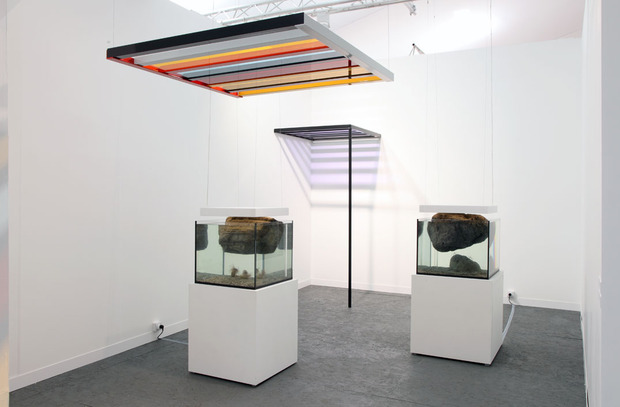
I noticed you liked the way the Esther Schipper gallery had curated Liam Gillick’s glass works above Pierre Huyghe’s aquarium pieces. Can you tell me why?
The hanging of Liam Gillick’s work above Pierre Huyghe’s aquariums was brilliant. They are both paying attention to space age materials but it wasn’t about, “Oh look, that piece has glass that looks like the glass in that piece.” For me, it was more about a sensibility—which is what Liam Gillick is all about. I really love his work.
[In reference to Huyghe’s work] I’m not comfortable with magic; I’m more into alchemic occult situations where the rock is really floating and we can’t describe why it’s floating. Many of the people at the fair are going to stand there and try to figure out how he did it, but that takes away from the art experience. I like experiencing art with my mind and my body and standing in front of something and getting that feeling of, “Whoa, this is amazing.”
When art becomes too clever, then it loses it for me.
McCarthy’s piece is definitely not clever. What his works do is knock you off your stool, because you’re looking at something you’ve never seen before. It really is like a psychedelic experience. You never get to land, you never get the, “Aha! That’s what it’s about” moment. People are looking for this “Aha!” moment, they want to feel affirmed and they want to feel confirmed about the world that they live in and I think that’s sad.
My thing is the opposite. I want to be surprised and bamboozled and I want to walk away with more questions than I got there with. I think that’s basically the meaning of life. We’re not here to figure things out and reach perfection, we’re here to strive and try to figure things out. That’s our purpose. That’s what I believe.
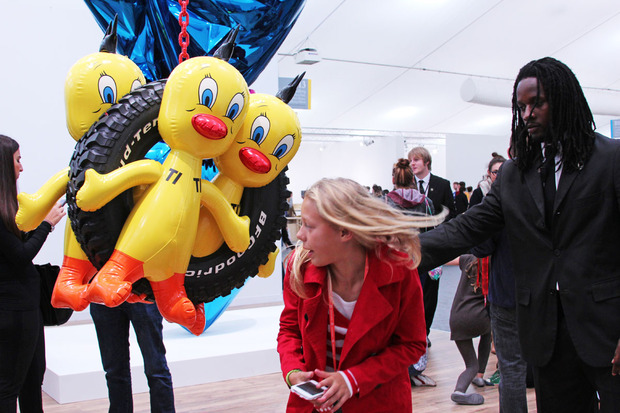
Talking about the strangeness of aiming for perfection; I thought there was something kind of crazy going on with the Jeff Koons work at the Gagosian stand. What do you think having those bouncers protecting the art work—or perhaps protecting people from the art work—was about?
The absolute chaos and confusion around the Jeff Koons booth is something to talk about. There’s a lot of different kinds of people at the fair. That spectacle with the guards is attracting a certain kind of art tourist, and if that booth collects enough of those people then there’s more elbow room for other people who want to look at other works around the fair.
The whole guard thing was really awesome. You felt like you couldn’t go anywhere near the pieces. I have nothing to say about the art works themselves, but it’s important to have that scene at the fair. It’s important for the fair itself. It’s a way of getting a certain kind of customer in through the doors. I saw the spectacle as part of the piece, most definitely. If they had looked more like military guards that would have been another thing, but in their black suits they looked—
Like nightclub bouncers.
Yes, like nightclub bouncers. The art tourists and the kids taking pictures with their parents see it as a real thing: That Jeff Koons artworks are so much more valuable than anyone else’s that they have to have guards. The general public will read it in that way, whereas all the art professionals have a responsibility to read it in a completely different way.
It is an art form in its own right, what we’re talking about here. I’m too romantic about art; I would never come anywhere near that. Koons and Damien Hirst, are taking pop art to the point where art is laughing at itself. I don’t approach my work with that kind of humor.
However, I do poke fun. I am most definitely putting a big question mark on minimalist and post minimalist art—the work of Donald Judd and Carl Andre. For example, the sheet rock stack [in the Bartha Contemporary show] is like an everyday version of Carl Andre, in a way. And the cabinets, with the pipes going through them, are like an everyday version of Donald Judd, which was quite calculated on my part.
I’m really not comfortable with the “this is this” thing. I’m not comfortable with showing something that is what it is, and that’s it. I’m not a Zen Buddhist or a stringent minimalist. I do this gesture where I stack a bunch of sheet rock and I could’ve just left it alone, but that would have been a Carl Andre. I can’t leave it alone. I have to flip it. I have to twist it a little bit. I like when I do something to my objects that is inexplicable, perhaps idiosyncratic. I’m doing that thing of getting people to leave the gallery with a question mark in their heads.
Tell me about what your experience of Frieze Masters was like.
Well, I was expecting to go there and be disappointed with what they were calling “Masters” because it could be anything up to the year 2000, which I thought was absurd. But when I got there and looked around and there wasn’t anything that I saw that bothered me in that way.
I did enjoy Masters as a study tool. You could actually go there and concentrate. On the other hand, one of the most important things for me in the art experience is that art from all ages can be shown right beside each other. It forces you to think about things and make connections throughout history that you otherwise wouldn’t make.
There were also a lot of so-called “Masters” in the main fair too—and that’s OK. Like seeing John McCracken next to Paul McCarthy; though they are from the same neighborhood, basically the same generation. Why I liked “Masters” is because I saw these 15th Century Japanese screens and Rococo statues next to what we’re talking about.
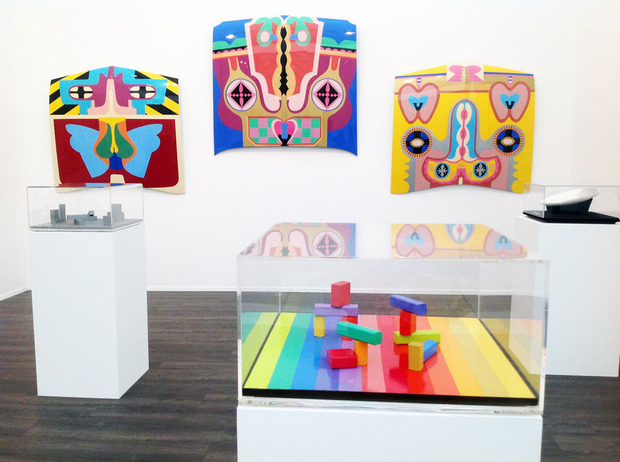
Like Aaron Siskind’s photographs and Judy Chicago’s car hoods?
Right. Judy Chicago developed a really intelligent feminism that never left the formal consideration of good art-making. The car hoods were symbols of macho greaser culture and she made those beautiful ceremonious paintings on them. She has a way of making feminist art that has a muscular way about it, and I like that about her work. Even her seminal feminist statement, “The Dinner Party,” has this muscular, meaty feel to it.
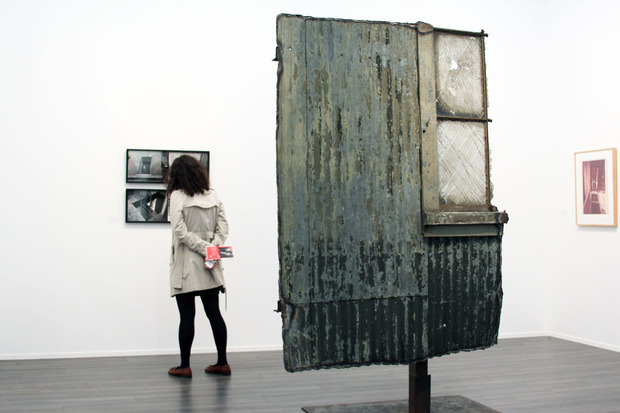
The Matta-Clark stand at “Masters” was particularly interesting to see with you. You made such a connection with the gallerist Thomas Solomon, and Matta-Clark’s work seems to be in synch with your own practice.
It was wonderful to talk to Thomas Solomon. I don’t retain the “who’s who” information of the art world, so for me it was a discovery that he was Holly Solomon’s son. I went to art school in 1979 and got out in 1984—at the time Holly Solomon gallery was a very important watermark gallery in New York. A lot of minimalist and conceptual art came from there, along with Virginia Dwan and others.
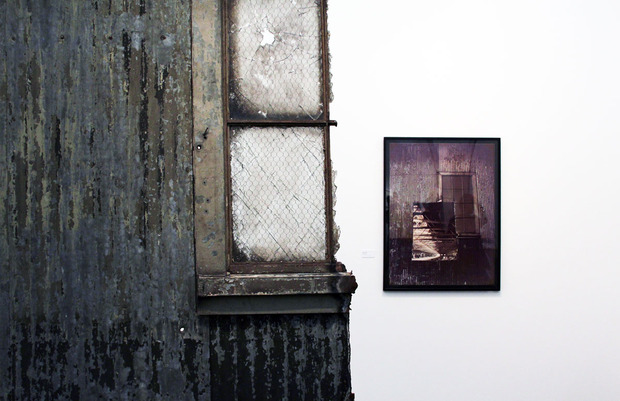
At this point I’ve seen so much of Matta-Clark, and I get this reaffirmation feeling I was talking about. I was surprised by the ready-made in the middle of the space. The process drawings and documentation were much stronger for me. I think the ready-made eclipses the experience of the original piece—the wall of the building that he cut open. Seeing it there was like seeing the baseball that Babe Ruth hit out of the park, instead of just hearing the story. It’s more of an artefact than an artwork for me. I don’t want to see the piece that Matta-Clark took out of the building; I want to see the hole in the building.
I’m pretty critical about the ready-made. When I was younger I spent a lot time collecting, organising and categorising found objects. So I completely exhausted that part of my vocabulary and this had nothing to do with most of what I’ve done. So by the time I had a career, I had already decided what I thought about found objects. What I’m into now is the made ready-made and altered ready-made.
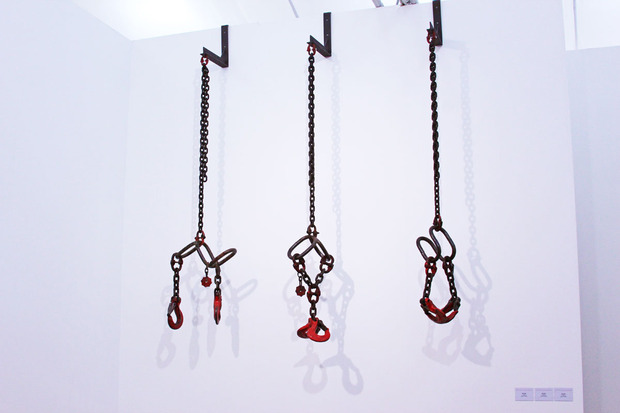
At the main Frieze tent you were into the Sofia Hultén work at the Konrad Fischer gallery. Do you look at her work in the “made ready-made” category?
Sofia Hultén is doing the same thing we’ve been talking about. At first glance, her industrial chains [Forking Paths 2, 3 & 4] seem brutal and in some way common, but actually they’re the opposite. They are intricate upon a closer look—very sophisticated work. She takes something that looks normal and she’ll take it apart and rebuild it with subtle changes in the piece—very well put together—that makes it about something else and I find that fascinating.
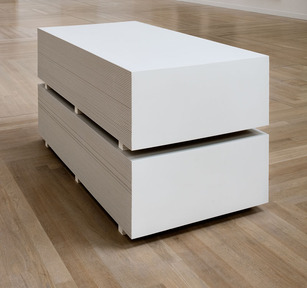
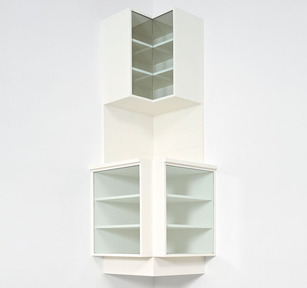
I think you could be talking about your own work there. There are similarities in the way you intricately build a seemingly everyday object to look very subtly different from how we experience it day to day.
Yes, with the original kitchen sculptures; I took something that—from a distance—looks like a kitchen set up. I was inspired by kitchen showrooms, because you never see a greasy spaghetti sauce pot sitting on the counter of a showroom kitchen. I had a site-specific show where I took the doors off the kitchen and replaced them with glass plates so they became like vitrines or aquariums, and suddenly the inside of the cabinet became something to look at.
Clay Ketter’s ‘See What I Mean’ is on show in Bartha Contemporary until 23 November 2013 at 25 Margaret Street, London, W1W 8RX.
Photos by Leonora Oppenheim












